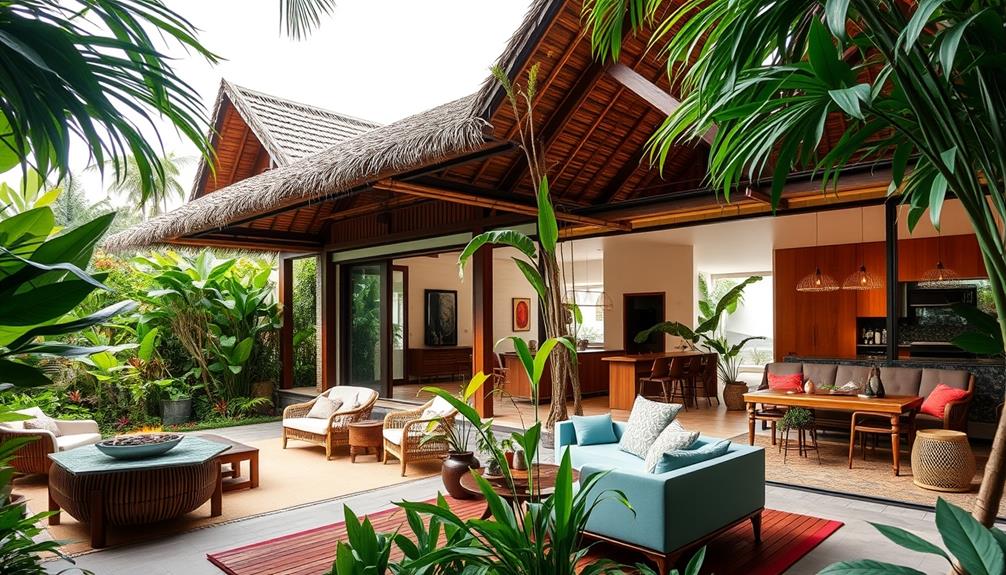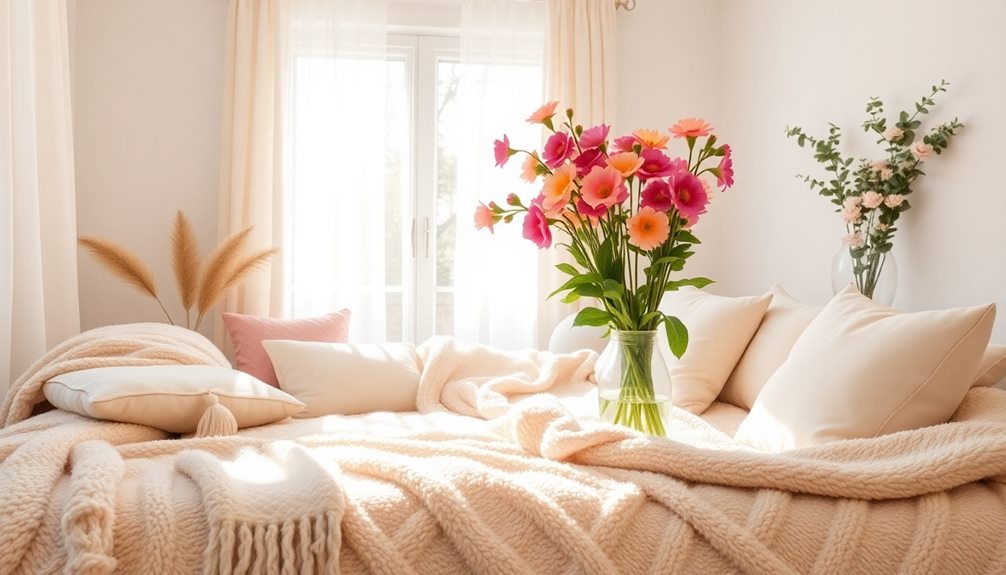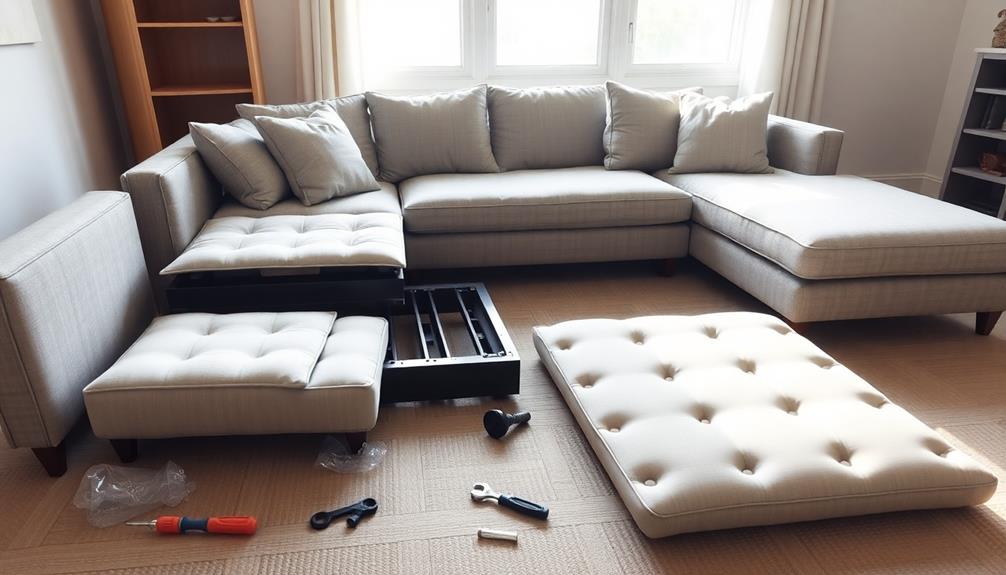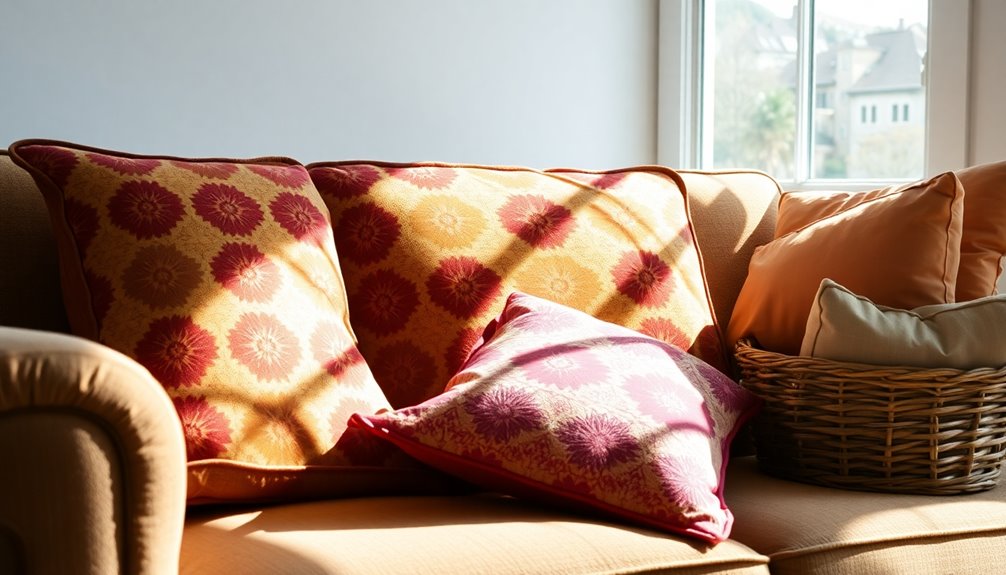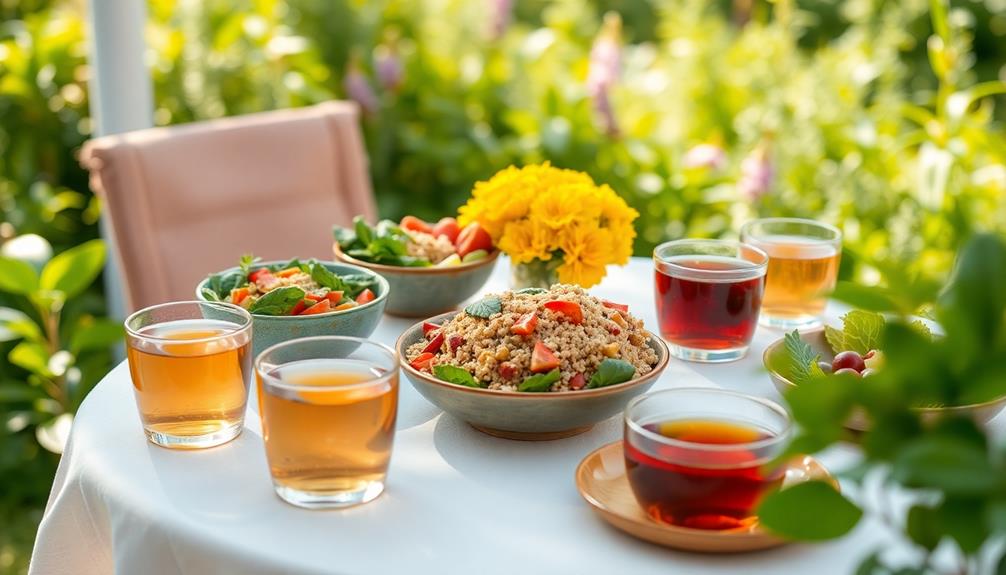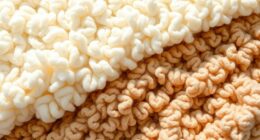To incorporate the Bahay Kubo style into your contemporary home, prioritize natural elements such as bamboo and wood. Design a layout with open spaces and expansive windows to bring in natural light and encourage airflow. Elevate the floors and ceilings to create a spacious atmosphere and control the temperature. Combine traditional bamboo furniture with modern pieces for a harmonious aesthetic. Remember to include serene outdoor areas with weather-resistant materials and greenery for a peaceful ambiance. This fusion of old-world charm and modern design not only enhances the visual appeal but also pays respect to Filipino culture. Explore additional concepts to elevate your design even more.
Key Takeaways
- Incorporate elevated finish floor lines to enhance storage and create multi-functional spaces in modern homes while maintaining the Bahay Kubo aesthetic.
- Utilize large windows for maximizing natural light and ventilation, fostering a bright and airy living environment.
- Blend traditional elements, like bamboo furniture, with modern designs to achieve a harmonious and eclectic interior.
- Emphasize high ceilings to regulate temperature and create a spacious atmosphere, reflecting the essence of Bahay Kubo.
- Create outdoor spaces with bamboo and wood furniture, utilizing thatched roof structures to enhance character and encourage relaxation.
Key Elements of Bahay Kubo Design
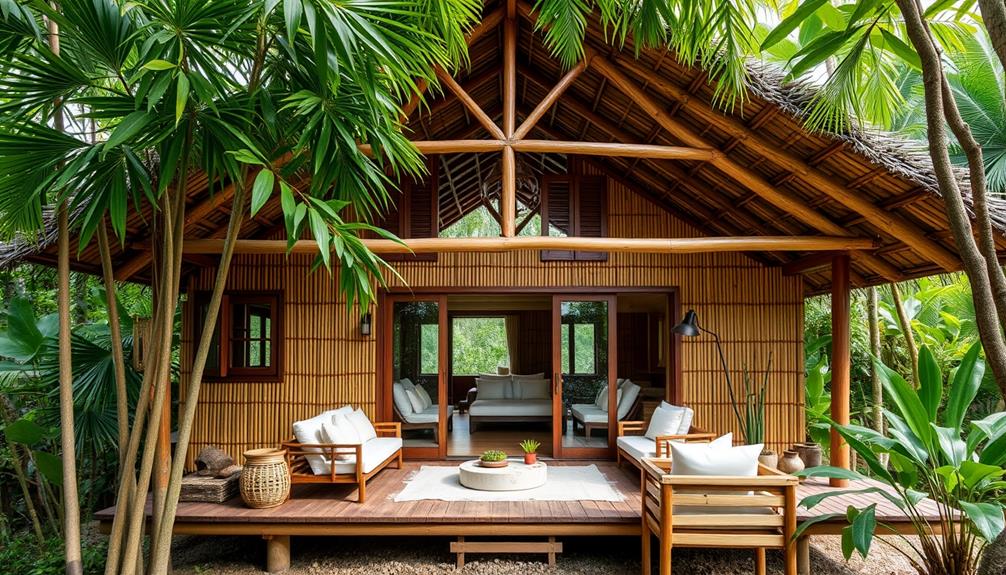
The charm of Bahay Kubo design lies in its harmonious blend of functionality and tradition.
You'll appreciate how the elevated finish floor line allows for versatile storage and multi-functional spaces. Large windows invite natural light and promote excellent ventilation, creating a revitalizing atmosphere.
The open plan layout fosters interconnectedness, making your home feel spacious and inviting. High ceilings play a vital role in regulating internal temperatures, ensuring comfort year-round.
By blending traditional elements with modern materials, you'll not only maintain cultural heritage but also create a unique aesthetic that stands out.
Incorporating these key elements into your home design can result in a beautiful, functional space that pays homage to Filipino roots while embracing contemporary living.
Incorporating Indigenous Materials
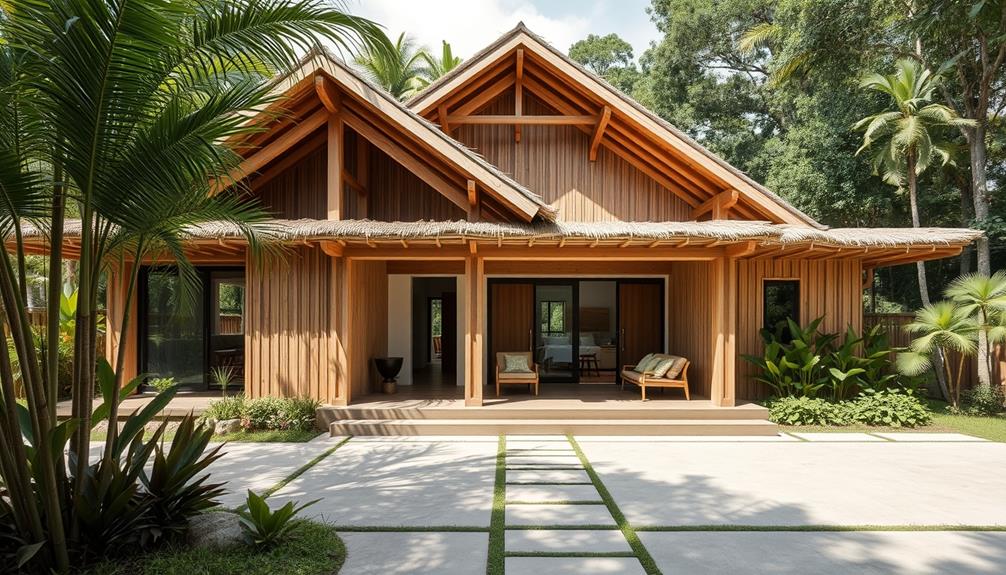
Incorporating indigenous materials into your home design brings a touch of authenticity and sustainability. You can start by using bamboo, a versatile and renewable resource perfect for both construction and furniture.
For instance, the modern farmhouse decor trends emphasize natural materials like wood and stone, which can beautifully complement bamboo elements. Consider traditional thatched roofs made from cogon grass; they not only look beautiful but also enhance eco-friendliness.
Integrating natural wood elements into your structures creates a warm, traditional feel that connects with Filipino heritage. Combining these indigenous materials with modern building methods achieves a sustainable balance that respects the past while looking toward the future.
Emphasizing earthy elements in your decor not only honors cultural roots but also promotes a healthier living environment, enriching your home's aesthetic and environmental impact.
Maximizing Natural Light and Ventilation
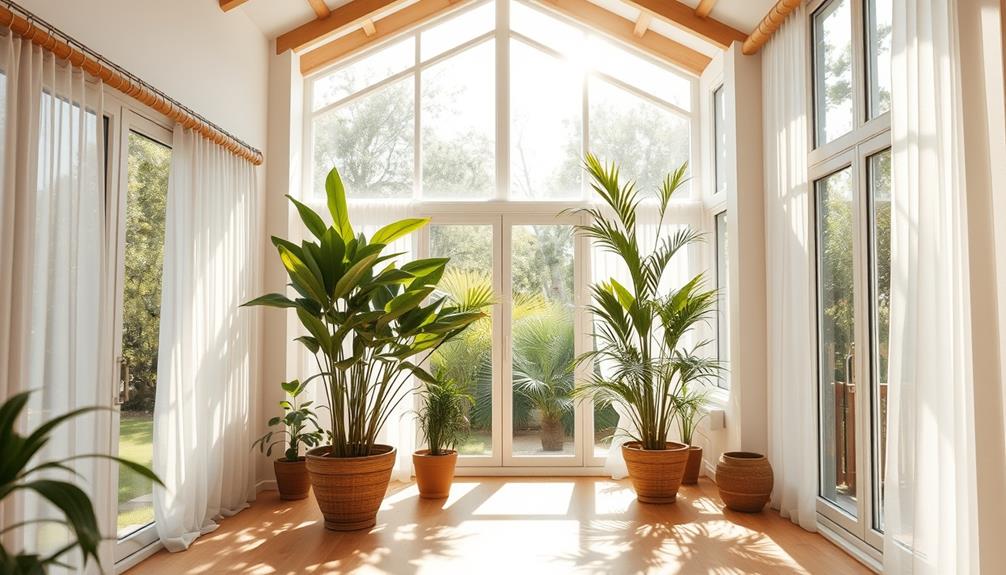
Bringing in natural light and ventilation can greatly enhance your home's comfort and aesthetic appeal. To achieve this, consider the following strategies:
- Strategic window placement: Position windows to maximize both light and airflow.
- Opt for larger windows: These not only brighten your interiors but also promote continuous air circulation.
- Embrace high ceilings: They help regulate temperature and create an airy atmosphere.
Incorporating these elements into your design allows your space to feel more open and inviting.
Elevated finish floor lines can also optimize the flow of light and air, creating a revitalizing environment.
Blending Traditional and Modern Furnishings
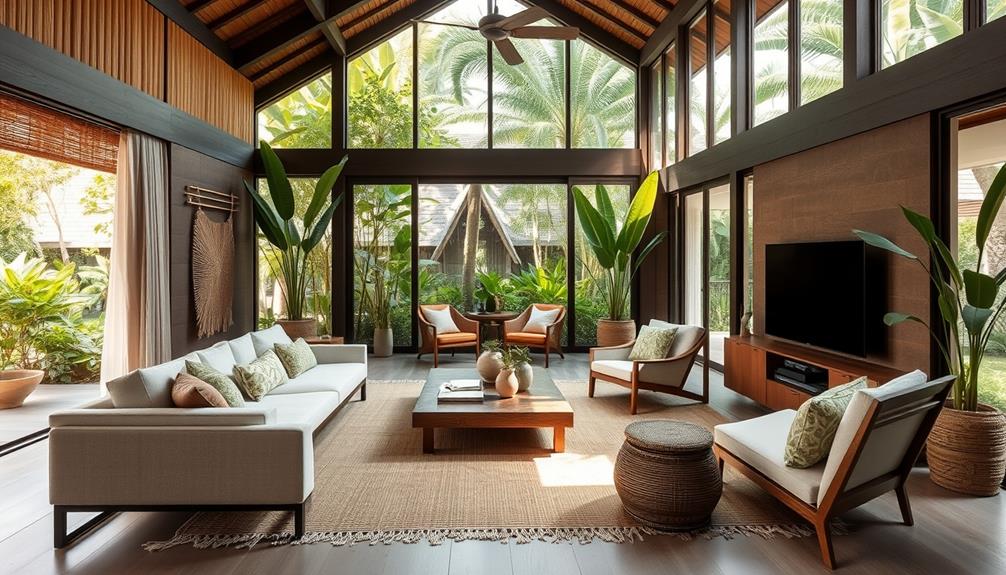
Often, blending traditional and modern furnishings creates a harmonious environment that celebrates both heritage and contemporary design. You can achieve this balance by incorporating traditional bamboo furniture alongside sleek, modern pieces.
Using natural materials like wood and rattan maintains the traditional aesthetic while integrating modern forms. Consider mixing antique heirloom items with minimalist designs for an eclectic touch that tells your story.
Furniture with clean lines enhances the Bahay Kubo's classic elements, ensuring your space feels cohesive. Remember, the goal is to reflect both your cultural roots and innovative spirit.
Creating Harmonious Outdoor Spaces
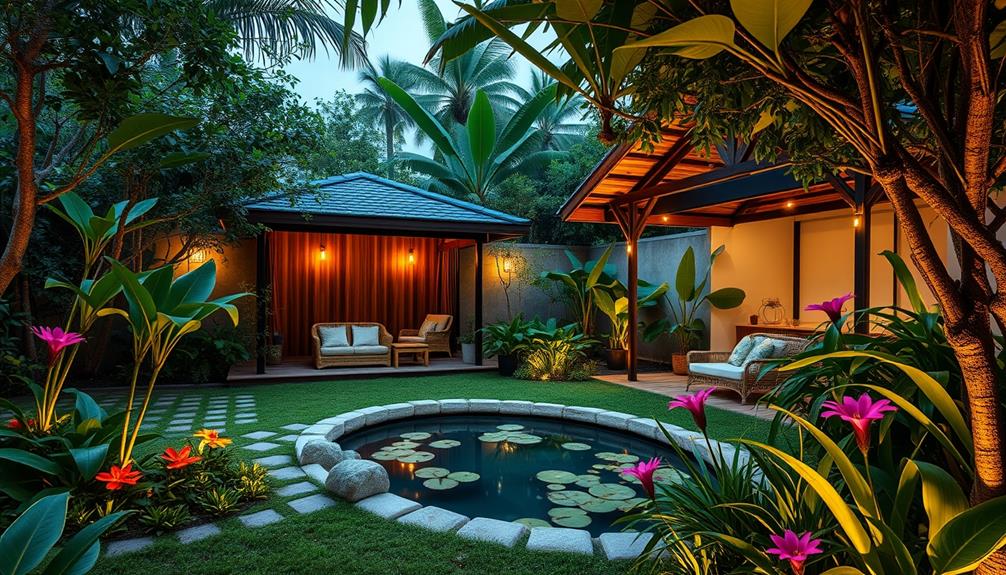
Creating harmonious outdoor spaces can transform your home into a tranquil retreat that reflects the charm of the Bahay Kubo.
By thoughtfully blending natural elements, you can create an inviting atmosphere that encourages relaxation and connection with nature.
Consider these key features:
– Bamboo and Wood Furniture: Choose outdoor pieces made from these materials for authenticity and sustainability.
Opting for weather-resistant materials guarantees longevity and durability in outdoor settings.
- Thatched Roof Structures: Incorporate pergolas or gazebos that mimic the traditional Bahay Kubo style, adding character and shade.
- Lush Greenery: Use tropical plants and vibrant flowers to enhance the ambiance and create a serene environment.
Frequently Asked Questions
What Is the History Behind the Bahay Kubo Architectural Style?
The Bahay Kubo originated in the Philippines as a response to the tropical climate. You'll find it reflects local materials, cultural traditions, and practical design, promoting ventilation, light, and community living through its open layout.
How Can I Maintain a Bahay Kubo-Inspired Home?
To maintain a Bahay Kubo-inspired home, you've gotta focus on natural materials, maximize ventilation, and incorporate traditional elements. Regularly update furnishings with sustainable options while embracing open layouts and large windows for light and airflow. Indonesian color palettes are also a great way to bring warmth and vibrancy to a Bahay Kubo-inspired home. Consider using earthy tones, rich browns, and deep greens to create a cozy and welcoming atmosphere. Additionally, incorporating traditional Filipino textiles and artwork can add a unique and personal touch to the space, truly embracing the spirit of the Bahay Kubo.
Are There Modern Alternatives to Traditional Materials Used in Bahay Kubo?
Imagine a tree standing tall, strong yet flexible. You can use modern alternatives, like engineered wood or recycled materials, to echo traditional Bahay Kubo beauty while ensuring durability and sustainability in your own living space.
What Are the Benefits of a Bahay Kubo Design for Sustainability?
A Bahay Kubo design promotes sustainability through natural materials, enhanced ventilation, and energy efficiency. You'll enjoy lower energy costs, improved air quality, and a connection to nature, all while honoring Filipino cultural heritage.
How Can I Incorporate Technology Into a Bahay Kubo-Style Home?
Did you know that 70% of homeowners prioritize smart technology? You can integrate solar panels, smart lighting, and energy-efficient appliances into your Bahay Kubo-style home, enhancing sustainability while maintaining that charming, traditional aesthetic you love.
Conclusion
As you begin this journey of embracing Bahay Kubo style in your modern home, imagine the stories waiting to unfold within those walls. Picture the laughter of family gatherings, the warmth of shared meals, and the serenity of nature spilling into your living space. Will you dare to blend the old with the new, creating a sanctuary that whispers of tradition while inviting the future? The choice is yours—transform your home into a timeless treasure that resonates with your heart.
